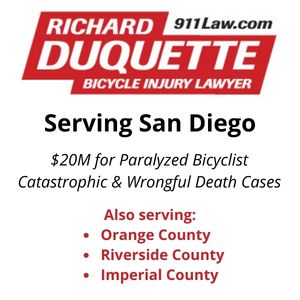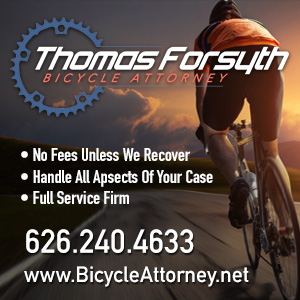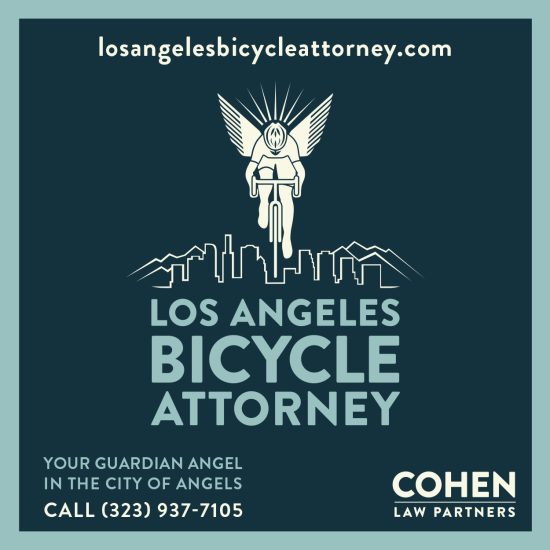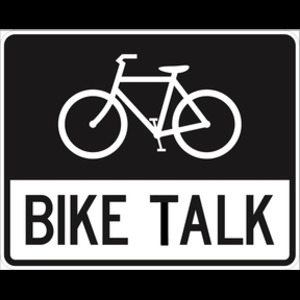
Twentynine-year old Mauricio Flores pled not guilty to felony hit-and-run in San Diego on Monday.
Flores is the minivan driver who allegedly slammed into a 66-year old bike rider near the city’s airport last month, leaving the victim with a life-threatening head injury.
In actions captured on video, he allegedly got out of his van, along with a passenger identified as 50-year old Jessica Bailey, examined the victim lying in the roadway, then calmly removed his bike from under their van and drove away.
They were captured in Kern County less than two weeks later.
There’s no word on whether Bailey is in custody, or if she will face any charges.
And no word on the identity or condition of the victim.
There are several stories from other news outlets, like this one, but they’re all virtually identical. Thanks to Phillip Young for the heads-up.
………
Streets For All founder Michael Schneider lays out in painful, step-by-step detail just what went wrong with the Uplift Melrose plan to improve the iconic, if deadly, LA street.
And how the environmentally friendly project was killed by a single LA councilmember, acting on behalf of a notorious NIMBY group.
Just after the Mid City West meeting, the NIMBYs sprang into action. They viewed Uplift Melrose as a threat to the sacred space of vehicles in this city, and were outraged that a project would even be considered that would rellocate space from cars for a bike lane. Those bike lane thieves, trying to take away sacred car space! And while the project was so much more than a bike lane — it was wider sidewalks, new trees, raised crosswalks, new lighting… all they could see was the bike lane.
Jim O’Sullivan, co-founder of Fix The City — a litigious organization that sues over nearly every bike lane and high density housing project using money from questionable funding sources — started sending threatening emails to Councilmember Koretz and eventually to the entire city council. They also posted misinformation on Next Door. When NIMBYs can’t win on the merits of something, then they simply resort to the tired and true “there wasn’t enough outreach” argument.
It’s worth taking a few minutes — okay, nine, according to the article — to read the whole thing.
Because this is what we’re up against.
And what we will continue to confront — and too often, lose — as long as we continue to elect regressive leaders in environmentalist sheep’s clothing.
Speaking of which, Bike the Vote LA is encouraging you to phonebank for CD4 candidate Nithya Raman this Sunday to support an actual environmentalist.
………
Something is seriously wrong when the person charged with enforcing a state’s laws doesn’t obey them himself.
South Dakota Attorney General Jason Ravnsborg killed a man riding his bike Saturday night, then continued driving home without bothering to stop, later claiming he thought he’d hit a deer.
An excuse used by countless other hit-and-run drivers, in a usually failed attempt to avoid responsibility for their crimes.
It remains to be seen whether Ravnsborg, who has a long record of speeding and other traffic violations, will be held accountable. Or if his position will shield him from blame.
Although it doesn’t bode well that the state’s Department of Public Safety is withholding key details of the investigation.
Ravnsborg was reportedly driving home from a Republican fundraising dinner, where he swears he didn’t drink.
Even though any rational and sober person would stop to see what they hit after an impact like that.
………
Still more proof you can literally carry anything on a bicycle.
Have 12’ 2x4s? Get a bike. pic.twitter.com/BOOUOX0SUH
— Kevin (@KnifeNerd) September 14, 2020
………
The war on cars may be a myth, but the war on bikes just keeps on going.
An American marine biologist in the Philippines with a bad case of windshield bias questions why road space is being given to bike riders when motor vehicles bring in much more “revinue” for the government. He may be many things, but an environmentalist clearly ain’t one of them, regardless of what the headline says.
………
Local
Bruce Willis is one of us, riding his Trek ebike through the streets of LA, even if the story somehow comes by way of Islamabad. Yippie-ki-yay, indeed.
Olympic boarder Shaun White and Vampire Diaries actress Nina Dobrev are two of us. Or make that three, as they went for a bike ride through the ‘Bu with her dog in his arms.
State
A recovering Newport Beach stroke victim reached his goal of swimming 100 miles Labor Day weekend, then walked a couple miles to where he’d left his bicycle to ride back home.
A San Diego letter writer questions the city’s 42 percent increase in bike ridership, saying it’s meaningless without knowing how many riders there were before. Hate to say it, but he’s got a point.
National
Washington state is adopting the Idaho Stop Law next month, allowing bike riders to treat stops as yields — but not treat red lights like stop signs, as is legal in Idaho.
This is how it works in other places. Austin, Texas is going to make permanent a popup bike lane installed during the coronavirus crisis after it proved successful. Unfortunately, unlike countless other cities around the world, auto-centric Los Angeles never bothered to install any temporary bike lanes during the lockdown period to begin with.
Dozens of Louisville KY residents rode to apartment where Breonna Taylor was fatally shot by police, who were looking for her former boyfriend, to see where it happened and demand justice for her.
Chicago is responding to the increase in bike riders by installing a curb and post protected bike lane on a busy street, removing 100 parking spaces to make room.
Boston is raising Austin’s ante by making an entire Downtown popup bike network permanent. Although Boston’s bike boom has also been reflected in a corresponding jump in bike thefts.
Now that’s how to campaign. A New York state assemblyman is riding his bike 116 miles across the state’s 116th Assembly District to raise funds for his campaign.
A 73-year old Franciscan friar in Pennsylvania is riding nearly 400 miles along the Erie Canal to raise funds for an outreach center serving people struggling with rural poverty; it’s the stage-4 colon cancer survivor’s tenth annual ride.
Billy Connolly is one of us, too. The Scottish comic, who suffers from Parkinsons, suffered an eye injury falling off his ebike near his home in Key West.
Unbelievable. Authorities dropped aggravated assault charges against a Florida driver who aggressively drove into a crowd of protesters, then pulled a gun on them when they surrounded his car.
Police in Florida have arrested four men for the January, 2019 shooting death of a man riding his bike, who was apparently collateral damage in a shootout between the occupants of two cars.
International
The World Resources Institute says 80 percent of urban freight begins or ends in cities, and it’s time to take it seriously — including using e-cargo bikes to make deliveries.
A bike rider goes skitching, hanging on to a semi-truck trailer on a Toronto highway. Although someone should tell Narcity that there’s no need to pedal when you’re being pulled by a truck.
A Canadian woman explains how Covid-19 finally encouraged her to learn how to ride a bike at the ripe old age of 33.
Financial Times profiles famed British bike rider and designer Paul Smith, calling him the most loved man in fashion.
He gets it. An English cycling instructor says a new protected bike lane isn’t intended to make it easier to drive, but to improve safety for people on bicycles and in cars.
France ie encouraging more people to ride bikes by paying them the equivalent of nearly $60 to get their bikes repaired.
Competitive Cycling
Defending Tour de France champ Egan Bernal dropped out after Sunday’s 15th stage, complaining that he just didn’t have any power.
Cyclist looks at Slovenian cyclist Tadej Pogačar, calling him cycling’s newest sensation.
An excerpt from a new book examines the troubled legacy of cycling great Marco Pantani; the 1998 Tour de France winner died of a coke overdose just six years later.
Women’s cycling is still going strong, despite the media’s best efforts to ignore it, including the longest ever stage of the Giro Rosa.
Finally…
That feeling when the disabled parking is in the middle of the street. Your next bike could be a folding mountain ebike for just 600 bucks.
And what does it say when the streets aren’t safe enough for police to conduct a bike safety sting?
………
Be safe, and stay healthy. And wear a mask, already.













